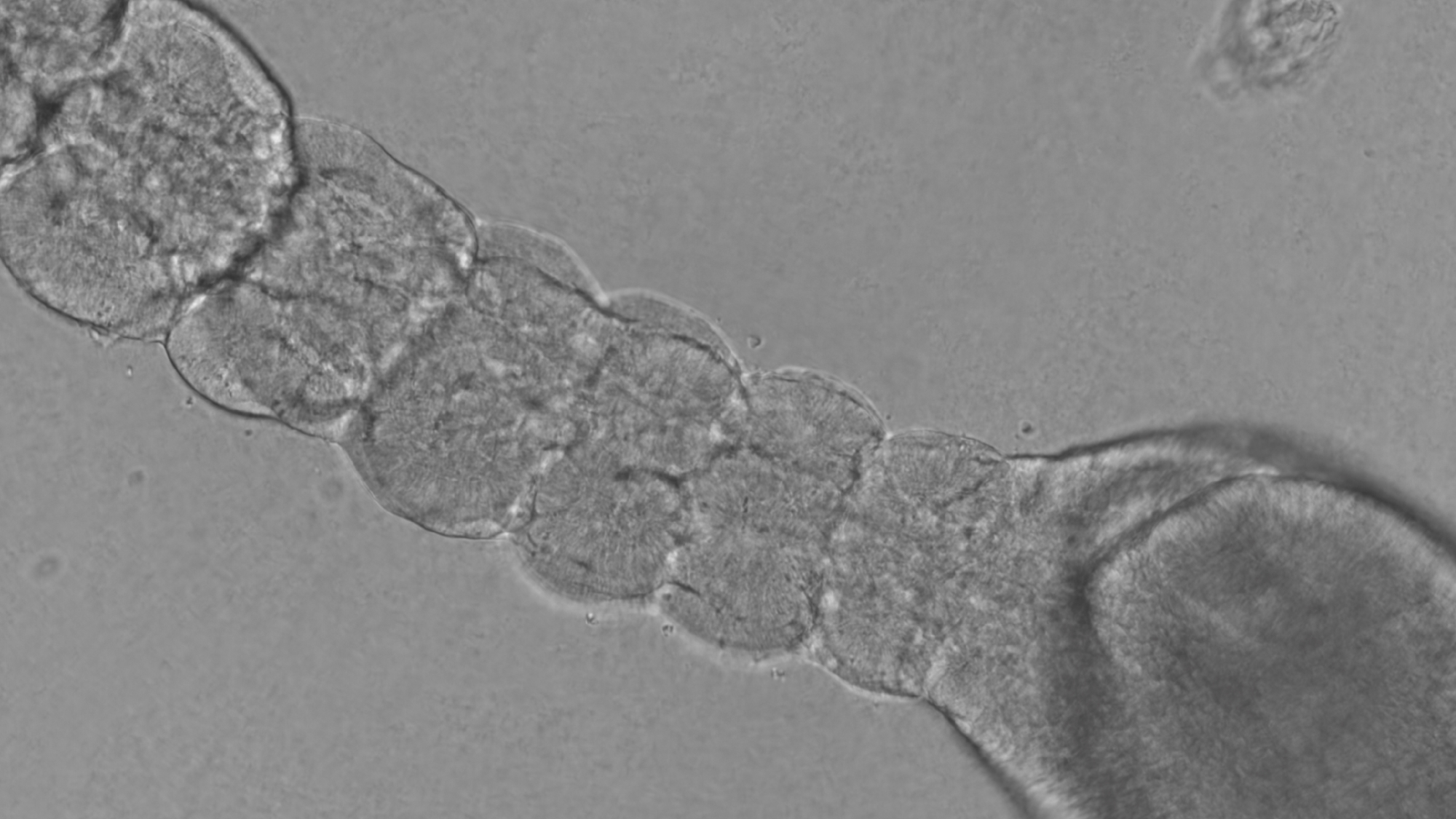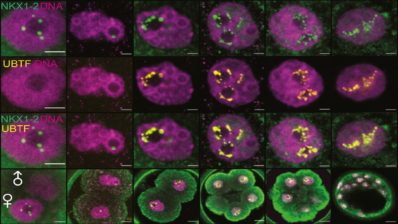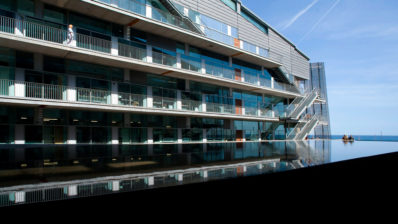Miki Ebisuya’s group at the European Molecular Biology Laboratory – Barcelona (EMBL Barcelona) has managed to recreate for the first time how the spine is formed during embryonic development. They have done this by creating an in vitro 3D model that mimics the somites, which are the precursor structures of the vertebrae, ribs and skeletal muscles.
The development of the spine is known to be regulated by the segmentation clock, i.e. by a group of genes that are periodically switched on and off, creating oscillating waves. Marina Sanaki-Matsumiya, first author of the study, explains that this segmentation clock is so important because “somites form periodically one by one under this regulation”. She adds that “if this rhythmic formation is interrupted, the vertebrae and ribs do not acquire the right shape and size, leading to congenital bone diseases”.
To carry out this research, the team cultured human stem cells in vitro by creating a 3D model that mimics the somites: the somitoids. On these organoids, they studied how the segmentation clock regulates development by creating waves of on/off expression in the HES7 gene, which plays a key role in somite growth. They found clear evidence of oscillations, especially when somitogenesis or somite formation was about to begin. In addition, a relationship between somite size and the segmentation clock was observed: “In the somitoids we created, somites had a constant size independent of the initial number of cells,” explains Sanaki-Matsumiya.
However, the oscillatory expression lasts 2 to 3 hours in mice, while in humans the period is 5 to 6 hours. Therefore, the group’s next step will be to understand why embryonic development between species is so different and how it affects the segmentation clock. Lead researcher Miki Ebisuya concludes that “our next project will focus on creating somitoids from different species, measuring their cell proliferation and the speed of cell migration to establish the differences in somitogenesis between species”.
Sanaki-Matsumiya, M., Matsuda, M., Gritti, N. et al. Periodic formation of epithelial somites from human pluripotent stem cells. Nat Commun 13, 2325 (2022). https://doi.org/10.1038/s41467-022-29967-1







